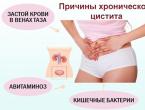Classification of reactions (test) chemistry test (grade 11) on the topic. Classification of reactions (test) test of chemistry (grade 11) on the topic Test 7 classification of chemical reactions option 1
Control robot no. 1
Option 1
Power Part A .
Food Parts B foldedon the basis of reliability , as well as .
The skin task of the part A is estimated at 0.5 points, the task of the part is assessed differentially: if the answer is correct - 1 point, from three correct answers - 2 - 0.5 point. The task of the part H is assessed differentially: in the form of 0.5 to 3 points. After the vikonannya roboti pіd the hour of rechecking the bali correctly vikonannya zavdan pіdsumuyutsya, in such a rank, go out the first ball
8 - 9 5
6 - 7 4
3 - 5 3
0 - 2 2
Chastina BUT
With greater swidkistyu ide vzaєmodiya hydrochloric acid z
1) hg 2) Zn 3) mg 4 )Fe
Before the OVR, no reaction
1) Al+O 2 → Al 2 O 3
2 ) MnO 2 + H 2 → Mn+H 2 O
3)H 2
O 2
→
H 2
+ O 2
4) HNO 3
+ Fe(OH) 3
→
Fe(NO 3
)
3
+ H 2
O
Guide to the reaction scheme
Mn 2 O 7 + NH 3 → MNO 2 + H 2 O + N 2 є
N 2 0 2) N 3- 3) Mn 4+ 4) Mn 7+
When water is separated, hydroxide-iones make speech, the formula is
1) Cu(OH) 2 2) Ca(NO 3 ) 2 3) NaOH 4) H 2 SO 4
5. With a new dissociation, 1 mol of midi nitrate (II) get settled
1) 3 mol cations in midi and 1 mol nitrate ions
2) 2 mol cations in midi and 3 mol nitrate ions
3) 1 mol cations midi and 2 mol nitrate-ions
4) 1 mol of cations in midi and 3 mol of nitrate-ions
6. Choose the correct spelling of the right side of equal dissociation of sodium carbonate
1) = Na + + CO 3 2- 2) = Na + + 2CO 3 2-
3) = 2Na + + CO 3 2- 4) = 2Na + + HCO 3 -
Part B
1) S -2 →S 0 BUT . HNO 3 →H 2 O + NO 2 + O 2
2) S +6 →S +4 B . H 2 S+SO 2 → H 2 O+S
3) N +5 → N +4 AT . NH 3 + O 2 → H 2 O + NO
4) N -3 →N 0 G . NH 3 + O 2 → H 2 O+N 2
D . C+H 2 SO 4 → CO 2 + SO 2 +H 2
1) barium hydroxide and hydrochloric acid A.2H + + SO 3 2- → H 2 O + SO 2
2) saline chloride ( III) that nitrate sribla B.Fe 3+ +3 Oh - → Fe(Oh) 3
3) saline nitrate ( III) and potassium hydroxide B.Ag + + Cl - → AgCl
4) sodium sulfite and hydrochloric acid D.H + + Oh - → H 2 O
3 SO 2 + O 2 = 2 SO 3 + Q
VI) required
move the temperature
lower the temperature
change vice
4) increase the vice
5) change the concentrationO 2
6) increase concentrationSO 2
Part C
Up to 20 g in size, which should be mixed with 5% midi sulfate (II), added sodium hydroxide. Calculate the mass of the siege that you have settled.
Control robot no. 1
on the topic “Classification of chemical reactions. Chemical reactions in water sources»
Option 2
Power Part A Mayut one correct variant .
Food Parts B foldedon the basis of reliability , as well asfood .
Option for assessing offensives: skinthe task of the part A is estimated at 0.5 points , managerpart B evaluated differently: most of the answers are correct - 1 point, three of the answers are correct less than 2 - 0.5 points . managerpart C evaluated differently: 0.5 to 3 balls . After the vikonannya roboti pіd the hour of rechecking the bali correctly vikonannya zavdan pіdsumuyutsya, in such a rank, go out the first ball
First ball
8 - 9 5
6 - 7 4
3 - 5 3
0 - 2 2
Part A
1. With more swidkistyu ide vzaєmodіya vody z
1) hg 2) Zn 3) mg 4) N a
2 . Before the OVR, no reaction
1) KMnO 4 → K 2 MNO 4 +MnO 2 + O 2
2) Cu 2 O+ H 2 → Cu + H 2 O
3) Al(OH)3 + HCl→ AlCl 3 + H 2 O
4) HCl + Fe→ FeCl 2 + H 2
3 . Oxidizing in the reaction scheme
CrO 3 + NH 3 → Cr 2 O 3 + H 2 O + N 2 є
Cr +6 2) N 3- 3) Cr +3 4) N 2 0
4. When dissociated like speech, they are settled in water
1) sodium carbonate 2) sodium hydroxide
3) sulfuric acid 4) silicic acid
5. With a new dissociation of 1 mol of aluminum nitrate (III) get settled
1) 3 mol aluminum cations and 1 mol nitrate ions
2) 2 mol aluminum cations and 3 mol nitrate ions
3) 1 mol of aluminum cations and 2 mol of nitrate ions
4) 1 mol of aluminum cations and 3 mol of nitrate ions
6. Choose the correct spelling of the right side of the equal dissociation of sodium phosphate
1) = Na + +PO 4 3- 2) = 3 Na + +PO 4 3-
3) = 2Na + +PO 4 3- 4) = Na + + HPO 4 2-
Part B
To establish the difference between the oxidizing-oxidizing process, we will designate the electron transfer scheme, and the scheme of the chemical reaction.
1) S 0 →S 2- BUT . SO 2 + O 2 → SO 3
2) S 4+ →S 6+ B . NH 3 + O 2 →NO + H 2 O
3) N -3 → N +2 AT . S+O 2 →SO 2
4) N +4 →N +5 G . H 2 O + NO 2 + O 2 → HNO 3
D. H 2 + S → H 2 S
2. Establish the viability between reagents and rapid ionic reactions
Reagents
1) midi sulfate ( II) and sodium hydroxide A.CO 3 2- + 2 H + → H 2 O + CO 2
2) nitric acid and potassium hydroxide B.Cu 2+ + 2 Oh - → Cu(Oh) 2
3) potassium carbonate and hydrochloric acid B.CuO + 2 H + → Cu 2+ + H 2 O
4) midi oxide ( II) that hydrochloric acid G.H + + Oh - → H 2 O
3 . For usunennya chemical equal reaction 2SO 2 + O 2 = 2 SO 3 + Q
at the bek of the approval of the oxide of sulfur (VI) required
1) move the temperature
2) lower the temperature
3) change the vice
4) increase the pressure
5) change the concentrationO 2
6) increase concentrationSO 2
Part C
Determine the amount of heat that is seen with 120 g of magnesium oxideafter the reaction of the fire with magnesium, for the help of thermochemical equivalence.
2 mg + O 2 = 2 MgO+ 1204 kJ
Test on the topic "Classification of chemical reactions"
Specify reaction schemes of the following:
1) Fe(OH) 3 → Fe 2 O 3 + H 2 O;
2) AgNO 3 → Ag + NO 2 + O 2;
3) SO 2 + O 2 → SO 3;
4) NO2+O2+H2O → HNO3.
Specify reaction schemes for which catalysts are vicorated:
1) KOH + H 2 SO 4 → K 2 SO 4 + H 2 O;
2) N 2 + H 2 → NH 3;
3) NH 3 + O 2 → NO + H 2 O;
4) NH3+O2→N2+H2O.
Determine the alignment of the scheme of reactions of the layout:
1) HNO 3 → H 2 O + NO 2 + O 2;
2) Fe + Cu (NO 3) 2 = Fe (NO 3) 2 + Cu;
3) NaOH + HCl = NaCl + H2O;
4) H 2 O 2 → H 2 O + O 2.
Specify the equivalence of the substitution reaction scheme:
1) Zn + 2AgNO 3 = Zn (NO 3) 2 + 2Ag;
2) Fe + H 2 SO 4 = FeSO 4 + H 2;
3) CaCl 2 + Na 2 CO 3 = CaCO 3 + 2NaCl;
4) CuO+H2 → Cu+H2O.
Determine the exactness of the scheme of exothermic reactions:
1) N 2 + H 2 → NH 3 + Q;
2) SO 2 + O 2 + Q→ SO3;
3) C + O 2 = CO 2 + 369 kJ;
4) CaCO3 = CaO + CO2 + 157 kJ.
Specify the exactness of the exchange reaction scheme:
1) NaOH + H 2 SO 4 → Na 2 SO 4 + H 2 O;
2) Ba(NO 3) 2 + K 2 SO 4 → BaSO 4 + KNO 3;
3) N 2 O 5 + H 2 O → HNO 3;
4) CuO+2HNO3 = Cu(NO3)2+H2O.
The number of products per plant is less than the number of outgoing speeches in different reactions:
1) exchange;
2) z'ednannya;
3) layout;
4) substitution.
Designate equal or schemes of oxide-water reactions:
1) Al + Cl 2 → AlCl 3;
2) BaCO 3 \u003d BaO + CO 2;
3) H 2 O 2 → H 2 O + O 2;
4) Cu+AgNO3 → Cu(NO3)2+Ag.
Specify equal or non-reversible reaction schemes:
1) N 2 + 3H 2 ⇆ 2NH 3;
2) Ba(OH) 2 + H 2 SO 4 → BaSO 4 + H 2 O;
3) NaOH + HCl = NaCl + H2O;
4) SO 2 + O 2 ⇆ SO 3.
The number of products per day is greater for the number of output speeches in different reactions:
1) layout;
2) exchange;
3) s'ednannya;
4) substitution.
Oxide-water in inorganic chemistry is the main reaction:
1) layout;
2) exchange;
3) replacement;
4) z'ednannya.
In inorganic chemistry, the substitution reaction proceeds:
1) between two simple speeches;
2) two folding mouths;
3) let's just put it together with speeches;
4) like two people are simple, and two are folding speeches.
Oxide-leading reactions can be:
1) substitution;
2) exchange;
3) layout;
4) z'ednannya.
Without changing the stage of oxidation of the atoms of the elements, the reactions always proceed:
1) exchange;
2) z'ednannya;
3) layout;
4) substitution.
The reaction of the exchange between itself can enter speeches:
1) simple and foldable;
2) two simple ones;
3) two folding;
4) like two simple ones, and two folding ones.
As a result of the reaction, the spreading can take place:
1) less simple speeches;
2) less foldable speech;
3) either more simple, or less folded speech;
4) at once simple and foldable speeches.
In reaction, half-heartedly among themselves, speeches can enter:
1) more simple;
2) less folding;
3) how simple, and folding;
4) simple and foldable.
State the fairness of the statement:
1) as a result of the reaction, no more than two new speeches are established;
2) in the reaction exchange, the number of different products behind the warehouse is equal to the number of different words outside the warehouse;
3) in the reaction of the day, the number of other out-of-stock speeches is higher, lower products;
4) in inorganic reactions, the number of different words outside the warehouse is higher than the number of different goods outside the warehouse.
Indicate the scheme for the alignment of the oxide-water reaction:
1) CaCO 3 \u003d CaO + CO 2;
2) H 2 O 2 → H 2 O + O 2;
3) Cu + O 2 → CuO;
4) NaHCO3 → Na2CO3+H2O+CO2.
Designate equal or schemes of oxide-primary reactions from the floor:
1) SO 2 + O 2 → SO 3;
2) NO2+H2O → HNO3+NO;
3) NO 2 + O 2 + H 2 O → HNO 3;
4) SO 2 + NaOH \u003d NaHSO 3.
Indicate schemes or equalization of oxide-leading substitution reactions:
1) CaCO 3 + SiO 2 = CaSiO 3 + CO 2;
2) Fe(OH) 2 + HCl → FeCl 2 + H 2 O;
3) Zn + H 2 SO 4 = ZnSO 4 + H 2;
4) Fe 2 O 3 + H 2 → Fe + H 2 O.
reactionNOTcan be at once:
1) exchange and oxide-water;
2) okisnyuvalno-vіdnovlyuvalnoy and laying;
3) substitution and oxidation-replacement;
4) half-life and oxide-water.
Homogeneous can be:
1) less reaction exchange;
2) less reaction z'ednannya;
3) less reaction;
4) all known reactions, as well as substitution reactions.
One and the same reaction can be overnight:
a) reverse and exothermic;
b) replacement and exchange;
c) exchange and distribution;
d) z'ednannya that laying out.
Designate equal or similar schemes of homogeneous reactions from the floor:
1) CaO (tv) + CO 2 (g) = CaCO 3 (tv);
2) CO(g) + O2(g) → CO2(g);
3) NO 2 (g) + H 2 O (g) + O 2 (g) → HNO 3 (g);
4) SO3(l) + H2O(l) = H2SO4(l).
Please indicate the equation or schemes of homogeneous oxidative-priming reactions:
1) Cu(NO 3) 2 (tv) → CuO (tv) + NO 2 (g) + O 2 (g);
2) SO 3 (g) → SO 2 (g) + O 2 (g);
3) NH 4 NO 3 (tv) → N 2 O (g) + H 2 O (g);
4) 2NH3(g) = N2(g) + 3H2(g).
Designate equal or schemes of heterogeneous oxide-oxide reactions:
1) Na (tv) + H 2 O (g) → NaOH (p-p) + H 2 (g);
2) H 2 (g) + CuO (tv) = Cu (tv) + H 2 O (g);
3) NO 2 (g) + CO (g) → N 2 (g) + CO 2 (g);
4) H 2 (g) + N 2 O (g) \u003d N 2 (g) + H 2 O (g).
Specify schemes of equalization of homogeneous exothermic exchange reactions:
1) NaOH (p-p) + HCl (p-p) = NaOH (p-p) + H 2 O (l) + Q;
2) Ba (OH) 2 (p-p) + 2HCl (p-p) = BaCl 2 (p-p) + 2H 2 O (l) + Q;
3) N 2 (g) + H 2 (g) → NH 3 (g) + Q;
4) H 2 (g) + I 2 (g) → HI (g) − Q.
Given the scheme (equal) of the reactions of the withdrawal of SO 2 . Of these, heterogeneous oxide-leading reactions will be:
a) FeS 2 (tv) + O 2 (g) → Fe 2 O 3 (tv) + SO 2 (g);
b) NaHSO 3 (p-p) + HCl (p-p) → NaCl (p-p) + H 2 O (g) + SO 2 (g);
c) S(tv) + O2(g) = SO2(g);
d) Fe 2 (SO 4) 3 (tv) → Fe 2 O 3 (tv) + SO 2 (g) + O 2 (g).
Given the reaction: a) vipal pyrite; b) vipaluvannya vapnyaku; c) photosynthesis; d) interaction of aqueous solutions with sodium sulfate and barium chloride. Oxide-leading reactions will be:
To describe the reaction of neutralization, signs are suitable:
1) is completely homogeneous;
2) exchange;
3) product - as a rule, strong water;
4) can be homogeneous and heterogeneous.
Given speeches, formulas for such Zn, ZnO, Zn(OH) 2 , ZnCO 3 , SO 2 . Indicate the number of speeches that can react with H 2 SO 4 (Razb.) for the type of reaction exchange:
Given the speech, the formulas of those Al 2 O 3 , Al, Al(OH) 3 , Na 3 , Al(NO 3 ) 3 , SO 2 , P 2 O 5 . The number of speeches, with yakim KOH (solution) can react with the type of reaction from the floor, more:
Enter the formula of speech, for which CuSO 4 (solution) reaction after the type of reaction exchange:
Speech data, which formula Fe 2 O 3 , NaHS, Fe(OH) 3 , Ba(NO 3 ) 2 , NaHSO 4 , Na 2 . Number of speeches with H 2 SO 4 (Razb.) React after the type of reaction exchange, so it goes:
Before the reaction, follow the following reactions:
1) mix K 2 S (solution) and H 2 S;
2) Al (OH) 3 and NaOH (p-p);
3) K 3 and HCl (p-p);
4) Al 2 O 3 and KOH (tv).
Specify exothermic processes:
1) F 0 (d) + e - → F − (r);
2) H 2 (g) → 2H (g);
3) Mg (g) → Mg 2+ (g) + 2 e - ;
4) Ca 2+ (g) + 2 e - = Ca(g).
The reaction, equal to 2SO2 + O2 = 2 SO3 + Q, is carried out before the reactions:
a) irreversible, exothermic;
b) werewolf, endothermic;
c) irreversible, endothermic;
d) werewolf, exothermic
2. The temperature coefficient of the reaction is more 2. Depending on how many times the speed of the reaction increases at an increase in temperature by 30°C.
3. Zinc reacts readily with sulfuric acid at the same concentration. Will any tester have a greater reaction?
4. Deyak reaction, fermented by equals A + 2 B = AB2, proceeding in different ways. Vihіdna concentration of speech Dorіvnyuval 4 mol/l. After 2 weeks, the concentration of speech increased to 0.5 mol/l. Calculate the average speed of the chemical reaction.
5. Vznachte, in which case, the equal chemical reaction CH4 (g) + H2O (g) → CO2 (g) + H2 (g) - Q at
a) temperature rise
b) lowering the vice
c) increase in the concentration of carbon dioxide.
6. The law of poaching masses: at a constant temperature, the freshness of the reaction is proportional to the yield ...
7. The systems of some of them do not have a surface divided, which are one type of one part of the system, are called ...
8. How to change the speed of a chemical reaction, equal to that
CO + 2H2 → CH3OH with a 4-fold change in pressure in the reacting system?
9. How to change the speed of the chemical reaction, equal to
2NH3 + 3CuO = N2 + 3H2O + 3Cu so that the concentration of ammonia will change by a factor of 3.
10. The temperature coefficient is more expensive 3. In some cases, the speed of the chemical reaction is increased when the temperature is increased by 30°C.
1. Fold schemes for the classification of chemical reactions: b) by thermal2. Give examples of chemical reactions, in which case the warehouse of speeches is filled with the inevitable.
Help, be kind, you need to do a chemistry testmetal power. For an element that can have the greatest manifestation of metal power, draw a diagram of the life of an atom. Fold the molecular structural electronic formula of this problem.
2) Set the onset of Fe->Fes->H2S->Na2S conversion. Name all speeches. Specify the type of chemical reaction, for reaction 3 store outside and shortly.
3) Finish the quiet reactions, which proceed to the end as a result of the release of gas: a) CaCo3 + HCl ->... b) BaCl2+AgNO3->... c) K2SO3+HNO3 ->... d) Na2CO3 + KCl->...
4) Write the formulas of acids and related acid oxides of coal, sulfur, selenium.
5) (factory) Weight of nitric acid in 350 cm2 difference with mass fraction of acid 16% and a total of 1.09 g/cm3 was added to the difference of lithium hydroxide. Appreciate the mass and the number of salt molecules that have settled. PLEASE HELP, I will be more wise
A small test on the topic " Classification of chemical reactions "for grade 11 students in 4 options. , came to Visnovka, so it is necessary to conduct thematic tests on the back, and then we will give the test ЄDI again, only one of such tests.
Zavantage:
Front view:
MOU "Secondary education school with. Chorniy Yar, Astrakhan region
Babakalenko Vira Oleksandrivna
2010
Test on the topic "Classification of chemical reactions" Option 1.
1 . It is not true that the retention of ammonia with nitrogen is the process:
a) laying out; b) catalytic; c) werewolf; d) homogeneous.
2. It is correct that the reaction of neutralization is the reaction:
a) b) exchange;
in) zavzhdi werewolf; G) catalytic.
3. From the introduction of lower processes to the chemical reaction, it is necessary to:
a) mountain; b) boiling; c) sublimation; d) melting
4. Non-reversible reaction:
a) b) content of sulfuric acid with sulfur(IV) oxide and water;
in) distribution of midi hydroxide (P); G)
a) with potassium hydroxide and hydrochloric acid; b) magnesium and sulfur;
in) zinc and hydrochloric acid; G) rozchinu chloride midi (II) and zalіzom.
Test on the topic "Classification of chemical reactions" Option 2.
1. Homogeneous reaction:
a) mountain of phosphorus b) reaction between phosphorus (V) oxide and water
in) oxidized to nitric oxide (II) sour G)
2. The correct hardness is the reaction: Zn + 2 HCl = ZnCl 2 + H 2
a) okisnyuval-visible; b) exchange;
c) negotiable; G) catalytic.
3 . From the pointing below the processes to the chemical reaction do not lie down:
a) burning magnesium; b) rustproof hall
c) boiling water; G) distribution of calcium carbonate
4 . Non-reversible reaction:
a) distribution of carbonic acid; b ) removing sulfuric acid from sulfur oxide (IV) and water
in) distribution of zinc hydroxide; G) obsession with ammonia from simple speeches.
5. Before the reaction of the ion exchange, the reaction is carried out:
a) we will soak it with water; b) with a flood and a whirlwind;
in) magnesium and hydrochloric acid; G) barium chloride and sodium sulfate.
Test on the topic "Classification of chemical reactions" Option 3.
1. Before the reaction, lay down:
a) mountain of phosphorus in) reaction between middle and wide nitric acid b) d) reaction between creid and hydrochloric acid
2. The correct solidification is the reaction: CuO + 2 HCl \u003d CuCl 2 + H 2 O
a) okisnyuval-visible; b) exchange;
c) z'ednannya; d) homogeneous.
3 . Time of chemical reactions thermal energy of the reaction system:
a) swear; b) do not change;
c) seen; G) you can look up and see.
4 . Homogeneous reaction:
a) Zn + 2HCl = ZnCl 2 + H 2; b) 2 NO + O 2 \u003d 2NO 2
c) S + O 2 \u003d SO 2; d) CaO + H 2 O \u003d Ca (OH) 2.
5. Before the reaction of the ion exchange, the reaction is carried out:
a) sodium and chlorine; b) zinc and sulfur;
in) flooding with hydrochloric acid; G) barium chloride and sribl nitrate.
Test on the topic "Classification of chemical reactions" Option 4.
1. Before substitution reactions lie:
a) mountain of phosphorus b) reaction between lithium hydroxide and hydrochloric acid
in) reaction between potassium and water G) expansion to aluminum hydroxide during heating
2. Correct hardness, what is the reaction: Ca (OH) 2 + 2 HCl \u003d CaCl 2 + 2 H 2 O
a) okisnyuval-visible; b) exchange;
c) z'ednannya; G) catalytic.
3 . Reaction, yak without changing the warehouse of speech - tse:
a) ozone poisoning; b) furnace of aluminum;
in) distribution of potassium permanganate; G) outside the oxidation of glucose.
4 . Exothermic reaction:
a) MgCO 3 \u003d MgO + CO 2; b) 2 H 2 O 2 \u003d O 2 + 2H 2 O
c) S + O 2 \u003d SO 2; d) 2 H 2 O \u003d O 2 + 2H 2
5. Before the reaction, which goes without changing the stage of oxidation, the reaction between:
a) sodium and chlorine; b) zinc and sulfur;
in) flooding with hydrochloric acid; G) barium chloride and sribl nitrate.




